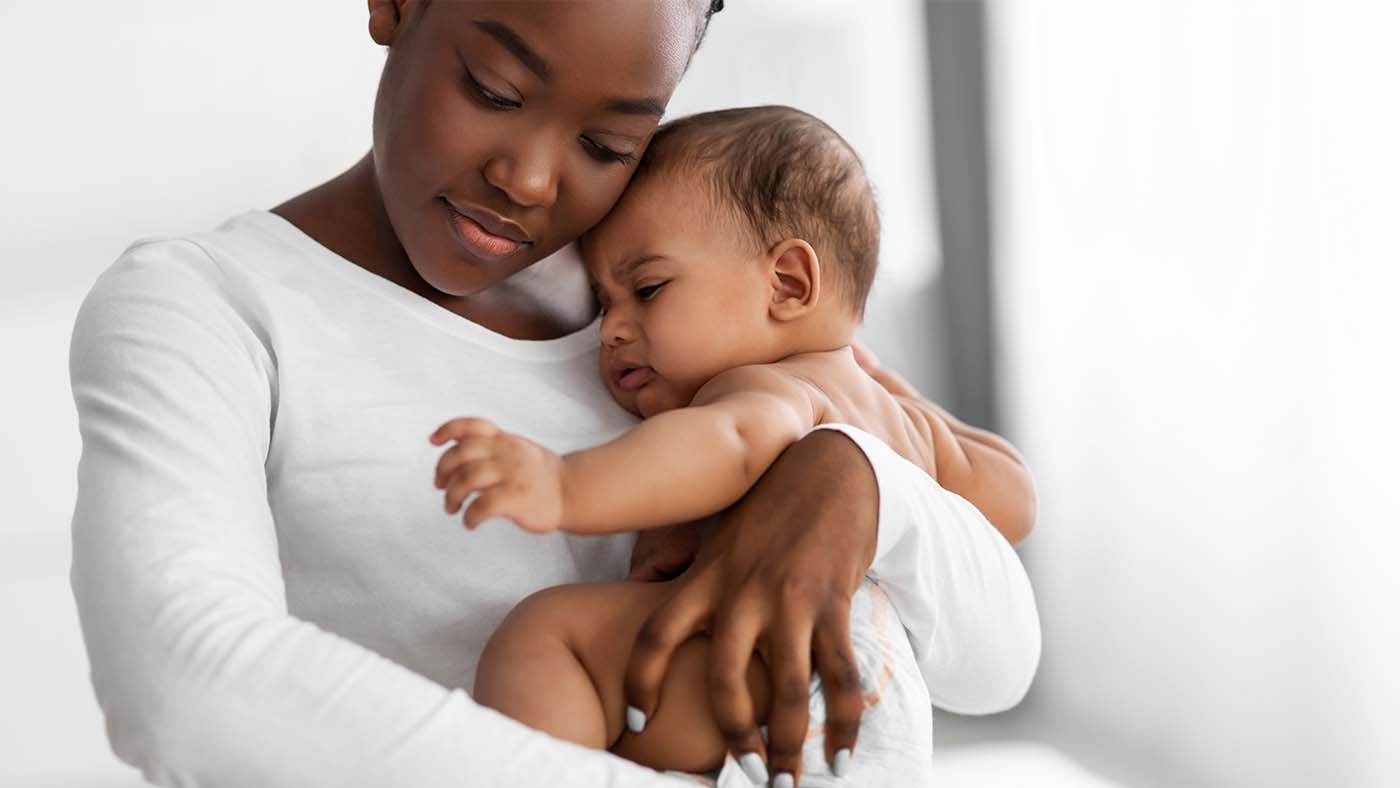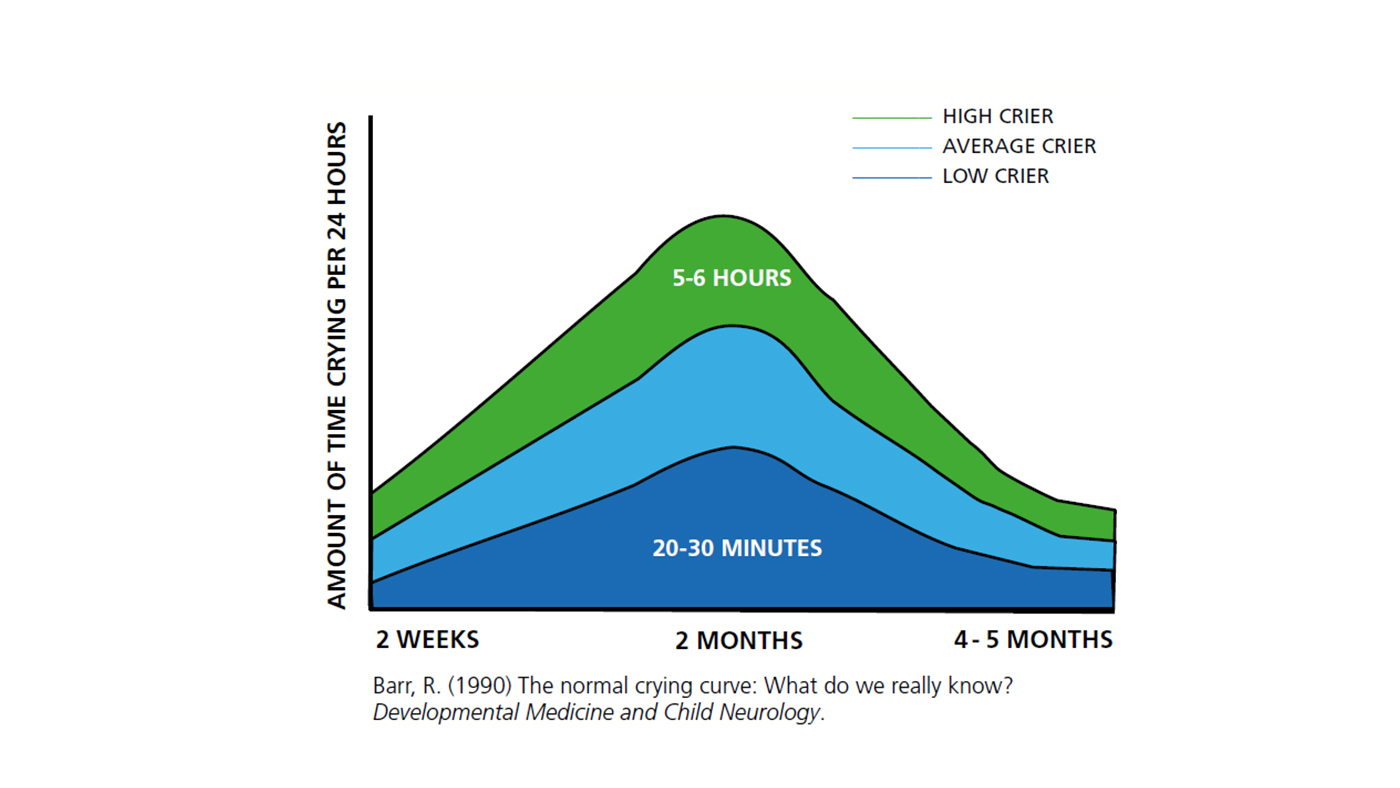New analysis questions understanding about how crying changes over the first year of life

You might have heard that the amount of time your baby cries for peaks at around six weeks. New research suggests that crying does not follow this neat pattern, and you might not be surprised to hear it varies a lot between individual babies. This research is important, as it gives parents and professionals a better understanding of what might be considered ‘normal’ crying as a way to communicate.
What is the crying curve?
When you search for ‘babies’ and ‘crying’ on the Internet, you are likely to find articles about the crying curve. Our own article about newborns’ crying refers to it, as it has been used to support the understanding of crying since it was first developed in the 1960s.
The research which led to the crying curve looked at crying during the first 12 weeks of life, and the findings have been replicated in many studies since the curve was first published. The crying curve suggests the amount babies cry increases up to around six weeks and then decreases steadily.[1]

Changing understanding of crying in the first year
However, recently scientists looked at studies of crying carried out in 17 countries and across the whole first year of life.
After reviewing the findings from 57 studies, these scientists found that there is a lot of individual variation in crying. This means there is a wide range of what is considered a ‘normal’ amount of crying.
They also suggest a different way of understanding how crying changes over the first year. Rather than using the crying curve, which suggests the amount of crying increases to a peak and then reduces quickly, they suggest crying increases quickly at first, then slowly decreases during the first year.[1]
What does this mean for us?
Now that this different model has been suggested, other scientists will use it in their research. This will help us to understand more about the changes in how much babies cry over the first year of life. We will look out for more information and share it with you as it is published.
What does this mean for you?
This research is unlikely to change your day-to-day interactions with your baby. It might help to know that there is variation in how much babies cry and that there is some discussion about whether crying really peaks at six weeks. This might help you as you respond to your baby’s cries and think about how to comfort them.
Your baby might cry to communicate discomfort, hunger, tiredness or over-stimulation. When you have checked they are comfortable, you could think about other things that might soothe them. When your baby cries, the things that comfort them are often linked to sensory input. They might be comforted by being gently rocked, stroked, sung or spoken to, or simply by being held.
Remember you know your baby best. If you are concerned about your baby’s crying, speak to a health professional. If you need support with your baby's crying you can contact Cry-sis.
Reference
[1] Vermillet, A-Q., Tolboll, K., Mizan, S.L., Skewes, J.C., & Parsons, C.E. (2022). ‘Crying in the first 12 months of life: A systematic review and meta-analysis of cross-country parent-reported date and modeling of the “cry curve”’. Child Development, 93, 1201-1222
Read more